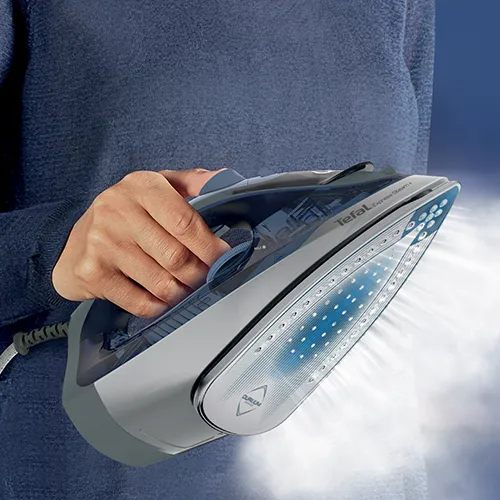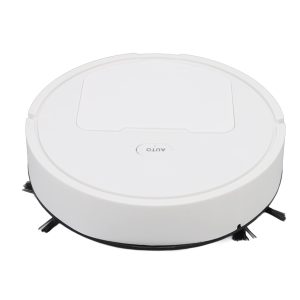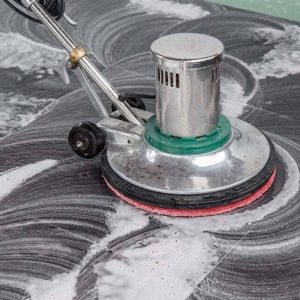Steam Iron: What Are They For? How They Work, Applications, and Safe Usage Tips

A steam iron is a popular household appliance used to remove wrinkles from clothes, linens, and other fabrics by applying heat and steam. This modern tool makes ironing faster and more efficient, ensuring your garments are wrinkle-free and looking their best. In this article, we will discuss the purpose of steam irons, how they operate, where they are used, and safety tips for proper use.
1. What Are Steam Irons For? (Introduction, Common Types, and Benefits)
A steam iron is designed to help you remove wrinkles and creases from clothes and other fabrics by applying heat and steam. Unlike traditional irons, steam irons use steam to soften the fabric, making it easier to press out wrinkles. They are an essential tool in most households, as they offer more efficient wrinkle removal and better garment care.
There are different types of steam irons, each designed with specific features:
- Standard Steam Irons: These are the most common types of steam irons. They come with a water reservoir and a steam function that can be activated during ironing.
- Cordless Steam Irons: These irons are battery-operated or have detachable bases, allowing for more flexibility and easier maneuvering without being restricted by a power cord.
- Vertical Steam Irons: These are designed for steaming hanging clothes like suits, dresses, or curtains. They allow you to steam garments without placing them on an ironing board.
- Professional Steam Irons: These heavy-duty models are often used in commercial settings like laundromats or dry cleaners. They have larger water tanks and higher steam output for continuous, efficient ironing.
The main benefits of steam irons include:
- Wrinkle Removal: Steam irons help remove stubborn wrinkles and creases from clothes and fabrics more easily than regular irons.
- Improved Fabric Care: Steam helps to relax the fibers in fabrics, which can reduce the risk of damage compared to dry heat.
- Time-Saving: Steam irons are more efficient, as the steam penetrates fabrics faster, reducing the time needed to iron clothes.
- Versatility: Steam irons can be used on a variety of fabrics, including cotton, linen, silk, and wool.
2. How Do Steam Irons Work? (Principle of Operation and Key Components)
The operation of a steam iron is relatively simple, but it involves several key components working together to provide effective wrinkle removal.
- Water Reservoir: The water tank stores water, which is converted into steam when the iron is heated. The capacity of the water reservoir determines how long the steam function can be used before it needs to be refilled.
- Heating Element: The heating element inside the iron gets hot when the appliance is plugged in, warming up the soleplate and generating the necessary heat to press the fabric. The heat helps to loosen wrinkles and set the fibers in the fabric.
- Steam Vents: These small holes in the soleplate release steam when the iron is heated. The steam softens the fabric, making it easier to remove wrinkles without causing excessive damage to the fibers.
- Thermostat: This component controls the temperature of the iron. It ensures that the heat stays at an optimal level for different types of fabrics, preventing overheating that can lead to burns or fabric damage.
- Steam Control: Most steam irons have a steam control dial that lets you adjust the amount of steam released. Some models also have a burst steam option for tackling stubborn wrinkles.
- Soleplate: The soleplate is the flat, metal surface of the iron that comes in direct contact with the fabric. Modern soleplates are often coated with non-stick materials, such as ceramic or stainless steel, to reduce friction and improve glide.
To use the steam iron, you fill the water reservoir, plug the iron into a power source, and adjust the temperature according to the fabric you are ironing. Once the iron reaches the desired temperature, steam is produced and released through the vents, allowing the heat and moisture to relax the fabric and remove wrinkles.
3. Where Are Steam Irons Used? (Practical Applications)
Steam irons are widely used in various contexts, from household chores to professional settings. Some of the common applications include:
- Household Use: Steam irons are essential in most homes, used for everyday tasks like ironing clothes, linens, and other fabrics. They help keep garments looking neat and presentable without the need for a trip to the dry cleaner.
- Clothing Stores and Tailoring Shops: In retail settings and tailoring shops, steam irons are used to ensure that clothes and garments are wrinkle-free before they are displayed or sold to customers. Steam irons also help tailor garments during the fitting process.
- Hotels: Hotels often use steam irons in guest rooms to allow guests to press their clothes before important events or meetings.
- Commercial Laundries: Industrial steam irons are used in laundromats and dry cleaners to handle large volumes of laundry efficiently. These machines are often designed for high capacity and continuous use.
- Specialty Applications: Steam irons are also used for steaming delicate fabrics like silk or wool, as they can be gentler than dry heat. They are also useful for removing wrinkles in curtains, drapes, and other fabric coverings that cannot easily be ironed flat.
4. How to Use Steam Irons Safely (Safe Usage Tips and Important Considerations)
To ensure that your steam iron works efficiently and safely, it’s important to follow these safety guidelines:
- Read the Manual: Before using your steam iron, read the manufacturer’s instructions to familiarize yourself with the features, settings, and care guidelines specific to your model.
- Check for Water Leaks: Always ensure that the water reservoir is properly sealed to avoid water leakage, which could cause burns or electrical hazards.
- Set the Right Temperature: Adjust the temperature setting based on the fabric you are ironing. For example, use a low setting for delicate fabrics like silk, and a higher setting for tougher fabrics like cotton.
- Use Distilled Water: If your steam iron recommends distilled water, use it to avoid mineral buildup inside the iron that could clog the steam vents and reduce efficiency.
- Avoid Overfilling the Water Tank: Do not overfill the water reservoir as it can cause water to spill out when the iron is hot. Follow the recommended fill level indicated by the manufacturer.
- Turn Off When Not in Use: Always turn off and unplug the steam iron when you’re done using it. This prevents accidents and conserves energy.
- Store Properly: Store your steam iron on a heat-resistant surface after it cools down. Avoid placing it on surfaces that could be damaged by heat.
- Regular Cleaning: Clean your steam iron regularly to prevent mineral buildup, which can clog the steam vents. Refer to the user manual for cleaning instructions, which may include using a cleaning solution or descaling tablets.
- Avoid Direct Contact with Steam: Be cautious of the hot steam released by the iron, as it can cause burns. Always direct the steam toward the fabric and keep your hand or body away from the steam vents.
By following these safety tips, you can enjoy efficient, safe, and long-lasting use of your steam iron.
Conclusion
Steam irons are indispensable tools in modern households, offering a quick and effective way to remove wrinkles from clothes and other fabrics. By understanding how steam irons work, where they are used, and the safety precautions to take, you can make the most of this handy appliance. Whether you’re ironing clothes at home or working in a commercial setting, a steam iron can make your ironing tasks faster and more efficient, helping you maintain wrinkle-free garments with ease.







